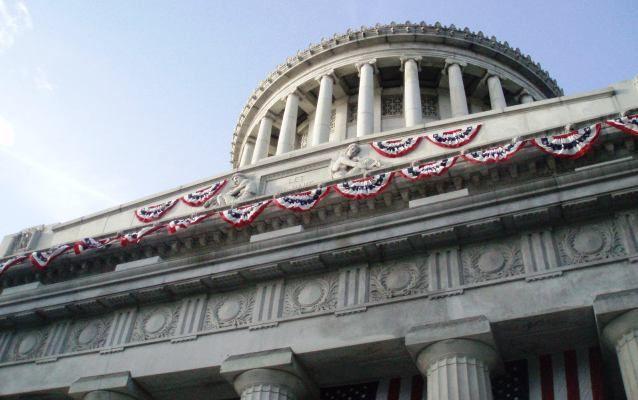Last updated: January 12, 2024
Place
Grant's Tomb

National Park Service
This memorial to Ulysses S. Grant--victorious Union commander of the Civil War--includes the tombs of General Grant and his wife, Julia Dent Grant. A West Point graduate, Grant served in the Mexican War and at various frontier posts before rapidly rising through the ranks during the Civil War. Grant's tenacity and boldness led to victories in the Battles of Vicksburg and Chattanooga and Robert E. Lee's surrender at Appomattox. Scenes of these events are depicted in mosaics in the tomb. In 1866, Congress awarded Grant his fourth star, making him the first full General of the Armies.
A grateful nation elected Grant to serve as President of the United States twice, in 1868 and 1872. Grant's accomplishments include signing the act that established the first national park, Yellowstone, on March 1, 1872. After his presidency, Grant settled in New York City. He died of throat cancer on July 23, 1885 in Mount McGregor, New York and was laid to rest in New York City on August 8.
Approximately 90,000 people from around the world donated over $600,000 towards the construction of Grant's Tomb. This was the largest public fundraising effort ever at that time. Designed by architect John Duncan, the granite and marble structure was completed in 1897 and remains the largest mausoleum in North America. Over one million people attended the parade and dedication ceremony of Grant's Tomb on April 27, 1897.
